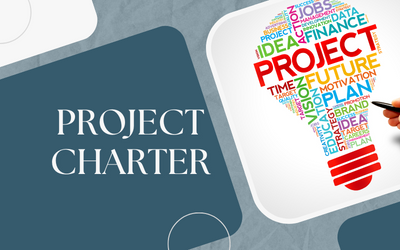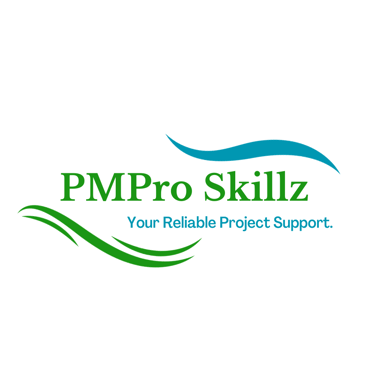Initiating Project Me: Defining Your Vision and Setting the Stage
The most critical personal growth project, starts with gaining clarity on your vision, values, and goals. This article explains how to gain clarity on your vision and values, set development goals, and create a project charter to provide structure for self-improvement.
PROJECT ME
Iyanna Trimmingham
9/4/20237 min read


The most meaningful project you will ever undertake is your own personal growth and evolution. For this reason, I call it “Project Me” – your lifelong journey of personal transformation, and the actualization of your highest potential. Project Me is not a single initiative with a fixed endpoint but an endless process of learning, refining, and rising to your next level of being. It requires committing to consistent improvement across all facets of life – physical, mental, emotional, and spiritual.
While the work is internal, external support accelerates progress. Mentors provide wisdom, accountability partners supply motivation, and communities foster belonging. By surrounding yourself with those committed to their own development, you elevate each other.
As is typically done with many projects, I will approach "Project Me" as a 5-part series. In this series, I will apply my expertise as a project manager to guide you through essential phases of Project Me:
Part 1 - Initiating Project Me: In this section I will explain how to gain clarity on your vision, values, and goals and document them in a thorough project charter. This milestone provides direction and structure to your personal growth journey.
Part 2 - Executing Project Me: In this part I will offer strategies for translating plans into consistent action and tracking progress rigorously. The section emphasizes building systems and habits more than sheer motivation.
Part 3 - Engaging Stakeholders: Here, I will explore how to enlist mentors, partners, and communities to accelerate your development while retaining self-leadership.
Part 4 - Overcoming Obstacles: This segment frames challenges as feedback for growth. It provides techniques to diagnose issues, brainstorm creative solutions, and adapt plans when life changes.
Part 5 - Completing Project Me: In this final part, I will discuss practices for sustaining gains made, harvesting learnings, and setting the stage for your next chapter of evolution after culminating an intensive phase of personal growth.
Project Me is a lifelong endeavor that unfolds gracefully through self-trust and consistent action over time. By approaching your journey strategically, you can actualize your highest potential with focus and fulfillment. Let’s begin.
Just as traditional projects start with clearly defining the goals, scope, stakeholders, and success criteria, Project Me begins by taking time to envision your ideal self. What are your untapped talents waiting to emerge? What knowledge and skills do you wish to cultivate? What impact do you want to create? Begin by diving deep to gain clarity on your authentic desires, values, and purpose. Distill this understanding into a concise vision statement that encapsulates your highest aspirations for Project Me. This vision statement acts as your guiding star, keeping you oriented as you navigate the intricacies of personal growth.
Defining Your Vision


The first step in initiating Project Me is to define your vision - a clear picture of your desired future self. This requires deep introspection to uncover your core values, passions, and purpose.
Set aside quiet time for self-reflection. Consider:
What truly matters to you? What principles guide your life?
What talents or strengths would you like to further develop?
How do you want to grow on a personal level?
What impact do you wish to have on the world?
Dig beneath surface desires to get to the heart of what motivates you. A helpful framework is to think across four key areas of life:
Physical Vision
How do you want to feel physically? What does your ideal health and vitality look like? Perhaps your vision includes having more energy, strength, flexibility, or losing weight. Make sure your vision is specific yet flexible - focused on how you want to feel rather than static metrics.
Mental Vision
What knowledge, skills, or mindsets would you like to cultivate? Do you aspire to learn new languages, instruments, or forms of creative expression? Is there an area of expertise you’d like to develop? Envision how you want to grow intellectually.
Emotional Vision
Consider the qualities and values you want to embody, such as courage, generosity, patience, or openness. What personal breakthroughs or transformations would enable greater self-awareness and emotional intelligence? Your vision might include being more confident, resilient, compassionate, or purpose-driven.
Spiritual Vision
Your spiritual vision reflects your sense of meaning and connection to something larger than yourself. It may involve faith-based aspirations or a desire for deeper alignment with nature, humanity, creativity, or tranquility. Articulate what spiritual fulfillment means for you.
Take time to vividly imagine your future self across these different facets. Let your vision expand beyond what currently seems possible. Treat this as creative brainstorming rather than concrete goal-setting. Capture any insights and reflections in a journal. Circle back to refine your thinking over several sessions. Eventually, begin distilling your reflections into draft vision statements.
Crafting Your Vision Statement
Your vision statement is a concise encapsulation of your highest aspirations for Project Me - your guiding compass going forward. While lengthy journaling is valuable during your reflection process, your vision statement itself should be succinct and inspiring.
Follow these tips for crafting an impactful vision statement:
Write in the present tense - Describe your ideal future self as though it is unfolding now. This brings your vision to life. For example, “I am confidently sharing my gifts with the world” rather than “I will be more confident.”
Connect to your purpose - Integrate higher meaning into your statement. Why does this vision matter to you? How does it reflect your core values? Anchor it in your sense of purpose.
Envision possibilities - Allow your vision to stretch you. Don’t limit yourself to what currently seems achievable. Your aspirational vision will pull you forward.
Keep it concise - Aim for 1-2 sentences that capture the essence of your vision. Find the key phrases that resonate most. You can expand on the details later.
Focus on how you want to feel - Emphasize qualities like vitality, creativity, confidence rather than specific metrics. Your vision is about self-actualization.
Express with positive emotion - Write your statement with energy and conviction. This is meant to inspire you through the challenges ahead.
Use vivid sensory language - Engage all your senses. How would your ideal self look, sound, move? Make your vision intimate and textured.
Revisit and refine - Allow your vision statement to evolve. Revisit it periodically and adjust the wording as your self-understanding deepens.
Here are some example vision statements:
I am growing each day through courage, compassion, and connection with others.
I am spreading light in the world through my artistic gifts and unique self-expression.
I am cultivating my natural talents and sharing them boldly with confidence and joy.
I am living with purpose, integrity, and service to humanity.
Keep wordsmithing until you find a vision statement that stirs your soul and stretches your sense of possibility. This statement will be a touchstone as you undertake Project Me. Display it prominently. Re-read it whenever you need inspiration. Knowing your destination clearly is the first step toward getting there.


With your vision defined, the next step is to create a project charter - a foundational document that outlines the scope, objectives, approach, timeline, stakeholders, and success criteria for Project Me. Treat this as your blueprint for the personal growth journey ahead.
A project charter serves several key functions:
Alignment - It ensures your efforts align with your vision rather than getting distracted by tangents.
Organization - It helps organize disparate tasks and ideas into a structured plan.
Motivation - It provides an inspiring reminder of why this project matters.
Communication - It conveys information to stakeholders about your project.
While each charter is unique, most include the following key components:
Project Scope: The scope summarizes what is included and excluded from Project Me. Given the comprehensive nature of personal growth, it is helpful to place some boundaries around the project. What specific facets will you focus on initially? What is out of scope for now but might be addressed later? Define the scope succinctly.
Objectives: Document the concrete outcomes you aim to achieve through Project Me. These are measurable milestones that indicate progress toward your vision. Verb examples include launch, build, create, cultivate, learn, heal. Make objectives ambitious but realistic.
Deliverables: Identify specific tangible deliverables you will produce that represent successful completion of your objectives. These might include products, programs, art, writings, new habits, enhanced skills, and more. Deliverables help make progress visible.
Timelines: Establish estimated time frames for achieving major milestones and deliverables. You can calendar out an entire multi-year project plan or just identify key deadlines for the current phase. Build in flexibility.
Risks: Anticipate potential hurdles that may arise as you undertake Project Me. Common personal project risks include lack of time, distractions, procrastination, loss of motivation, and getting overwhelmed. Have a mitigation plan.
Resources: Outline the resources needed to support your success. This may include mentors, training programs, funding, equipment, childcare, workspace, or other assets. Be proactive about securing resources.
Success Criteria: Define clear criteria for what success looks like upon completion. Combine subjective outcomes with objective metrics and deliverables. Revisit these often to track progress.
Stakeholders: List people who will be invested in and affected by Project Me. These might include family members, friends, colleagues, teammates, or mentors. Plan how you will enlist their support.
The charter does not need to be lengthy. The goal is to succinctly summarize Project Me’s purpose, scope, approach, resources, and measures of success. This gives direction and structure to your personal growth initiative. Treat your charter as a living document to be revisited and updated regularly. With your vision statement and project charter complete, you are ready to move into the execution phase of Project Me. But first, celebrate this major milestone! You have embarked on the journey of a lifetime - the creation of your highest self.
Key Takeaways:
Take time to engage in deep self-reflection to gain clarity on your authentic desires, values, and purpose.
Synthesize your reflections into a concise, positive, sensory vision statement that describes your ideal future self.
Document your project charter including scope, objectives, timeline, resources, risks, and success criteria.
Let your inspiring vision statement and thorough charter guide you through the challenges ahead.
Revisit your vision and charter regularly, allowing them to evolve as you gain self-knowledge.
Completing this initiation phase is a major milestone to celebrate before executing your plans.
The initiation of Project Me lays the groundwork for your personal growth journey. With vision and purpose aligned, you now have a framework for translating aspirations into reality. The hard work lies ahead, but you have set the stage for success. Onward to the next phase of bringing Project Me to life!

